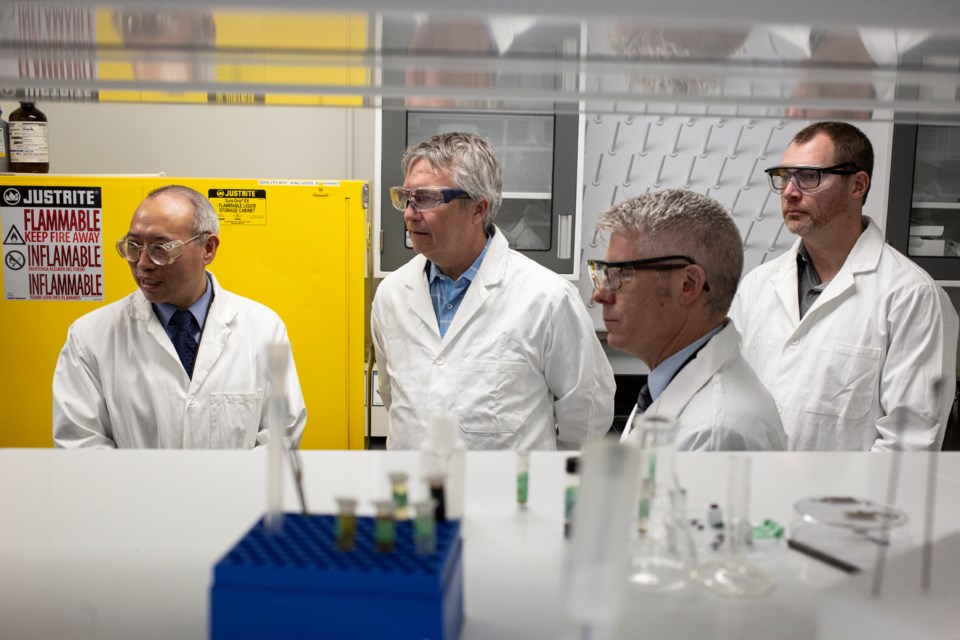A University of Guelph professor is receiving $1.4 million over the next seven years toward his research, which includes developing practical applications for a potentially game-changing nanomaterial called graphene.
Prof. Aichen Chen was recently named as a tier-1 Canada Research Chair in electrochemistry and nanoscience, a title that came with the $1.4 million in funding.
For the past five years, Chen has been working with an exciting nanomaterial called graphene — which is almost entirely transparent, lightweight and incredibly strong. His aim is to use it to create innovative green technologies for projects like energy storage and clean drinking water.
The material is created from graphite, but exists on a single atomic layer — meaning a sheet of graphene is essentially two dimensional. A sheet of graphene would have an X and a Y dimension, but the Z dimension would be too small to see with the naked eye.
It was first observed by applying a piece of sticky tape to a block of graphite. When it was pulled off and the tape was dissolved, the result was a flake of graphite now existing as a stable single layer of atoms.
Chen and his team create the graphene in the labs at U of G using an electrochemical process.
“Graphite itself is cheap, but the graphene nanomaterials are expensive,” said Chen.
The new nanomaterial was discovered by UK researchers in 2004. In 2010 that team won the Nobel Prize in Physics for the discovery and its work with it.
Graphene conducts heat better than any other known material at room temperature, is stronger than steel and conducts electricity as well as copper.
So far, researchers have identified a number of applications for graphene, including being used in fuel cell technology or as an additive to strengthen materials like composite metals or concrete.
Another form, called graphene oxide, can be used as a fuel additive or for water purification.
Research into graphene is being done around the world, but University of Guelph has access to unique deposit of graphite in northern Ontario that happens to be ideal for creating the nonmaterial.
Thunder Bay-based Zenyatta Graphene Solutions identified a deposit of graphite on Constance Lake First Nation, near Hearst, Ont.
The company has entered into a memorandum of understanding with the First Nation to extract the graphite, said Dr. Colin van der Kuur, research catalyst for Zenyatta.
“There’s going to be an industrial explosion within the next couple of years — the next five to 10 years it’s going to be huge,” said Van der Kuur
He said the company’s deposit is about the size of two CN Towers and is unique.
“Basically, a volcano burped but didn’t erupt. So underground the CO2 and methane came together and formed very small graphite crystals, very pure, within the igneous rock itself,” he said.
Zenyatta is partnering with U of G, and providing samples of the graphite for the university’s research.
Chen said the graphite from Zenyatta’s deposit is better than other samples he has worked with.
“And it is a Canadian source,” said Chen. “We like working with a Canadian company.”
Chen said the research money will allow more students and post-doc fellows to work on the project.
Guelph MP Lloyd Longfield was on hand Wednesday for a tour of the labs working on the graphene in U of G's MacNaughton Building.
“We saw the future this morning,” said Longfield. “Having a research centre close to the supply could make Canada a world leader in this area.”
